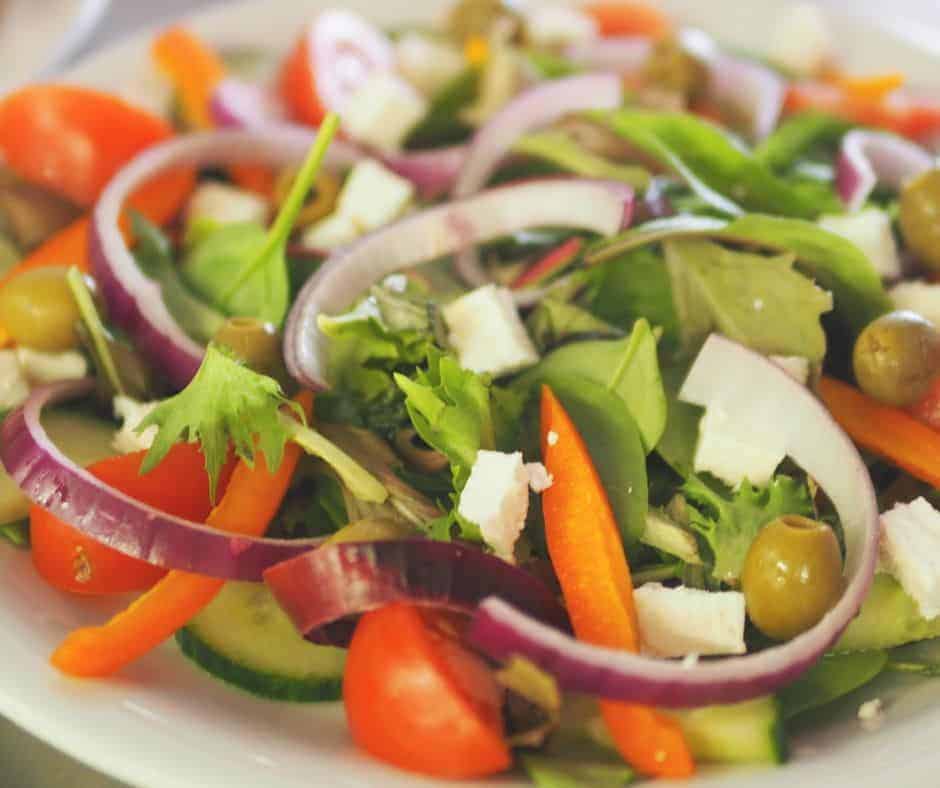Dining in the dark provides an opportunity to disengage the sense of sight and fully experience food without preconceived ideas and judgements.
For years, I’ve wanted to experience dining in the dark
I wanted to experience how food smelt, tasted and felt when my sense of sight was disengaged. I believe, when it comes to eating, that sight can be the greediest sense, causing us to perceive less with our other senses.
Although I found this to be the case while dining in the dark, I’d never fully appreciated how deceptive our sense of sight can be—how it inhibits our ability to fully experience our other senses.
My experience of dining in the dark
My husband and I booked into Nox Dining in the Dark in Singapore for our dining experience.
Although I had always wanted such an experience, I was hesitant about the price but thought this was something I really needed to experience for myself. Then, upon receiving a recommendation from an attendee of one of my intuitive eating workshops, I decided to book in.
On arrival, we were directed to a nook in the dimly lit waiting area. The staff provided us with hors d’oeuvres and then explained the experience. They then directed us to the door that would lead us to our dining-in-the-dark experience.
On the other side of the black door, we were introduced to our blind waiter.
The waiter asked me to place both my hands on his shoulders, and my husband hand’s on my shoulders. He then began slowly climbing a carpeted set of stairs. With each tentative step, it became darker and darker, until we reached the top of the stairs, where it was pitch black. At this point, we were completely in our waiter’s hands.
Stepping into the dark and disengaging the sense of sight
Our waiter opened a door, and we stepped into a cool, pitch-black room. We shuffled our feet across the floor to our table. He stopped and took my hands, placing them on the back of my chair. I proceeded to feel down the back of the chair to determine which way the seat was facing. With both hands on the chair, I tentatively sat down.
I then proceeded to feel in front of me for the table and came across a fork and spoon.
As I felt the table, our waiter explained that he would get us our drinks, leaving us sitting in the absolute dark.
We were alone in the dark with no idea how to exit should we require. I felt a heaviness in my chest. I knew this feeling was only in response to the thoughts in my mind. Acknowledging this, I took a deep breath and released the mild claustrophobic feeling.
Before long, I heard our waiter’s gentle voice in the darkness. He asked me to reach out my left hand.
In my outstretched hand, he placed a glass of wine. I took the glass and positioned it on the table in front of me, cradling the stem and base with both hands.
After familiarising myself with the glass, I took it in my right hand and brought it to my nose. I took a deep breath and inhaled the aroma of the wine before taking a sip. (If you want to learn more about wine tasting, I have two blogs on the topic, How Wine Tasting Can Help Us Find Our Ideal Diet and Finding Pleasure in Mindful Sips of Wine.)
I then felt for my fork and positioned my glass in front of it so I could retrieve it later with minimal risk of spillage.
With my glass of wine securely in position, our waiter was again by my side with our entrée.
He explained that he was going to set the entrée dish on the table before me. He directed us to start at the six o’clock position and to eat each dish in a clockwise direction, one dish at a time.
The eating experience
I felt the tray and four bowls to be certain I was beginning with the dish closest to me. Then I took the small dish in both hands, bringing it up to my nose. I inhaled. The dish had a subtle, fresh aroma that I could not distinguish.
I then retrieved my fork and stabbed into the bowl. Yet when I brought the fork to my mouth, nothing was on it. I tried again with more awareness of resistance as my fork pierced an object in the bowl. I then placed this small object into my mouth.
At first, I had absolutely no idea what it was, apart from being soft and fleshy.
I took another piece. This time, I felt the object with my tongue. I felt a smooth side and a spongy side. As I began to chew, I realised as the subtle flavour burst into my mouth that I was eating a small piece of tomato.
As I took forkful after forkful, I discovered the crunchy bitterness of red onion, the sourness of an olive, the cool crunchiness of cucumber, and the mild creaminess of feta.
I was eating a Greek salad. It felt like the most exquisite combination of textures and flavours.

Each dish had an interesting combination of flavours and textures to enhance the sensory experience. I felt I was gaining an appreciation and awareness of foods I would normally eat on autopilot as they are so familiar.
Never in this way had I felt the texture of chickpeas or couscous with my tongue. Normally, my eyes and mind tell me what they are. Yet, in the dark, I had to explore them with my tongue to identify them.
Dining in the dark as a mindful eating experience
I also became aware that although I normally embrace conscious eating, the sight of food elicits beliefs about what I will enjoy.
Dining in the dark with no awareness of what I was eating until I could feel and taste the food, gave me an appreciation of how my enjoyment of food is normally clouded by preconceived perceptions.
The pumpkin croquet was sensational as the soft sweetness was surrounded by the contrasting crispy and salty outer crumbing. The loud, squeaky sound of chewing raw mushrooms was immense in contrast to the soft, creamy risotto. Raw zucchini seemed much more fibrous and peppery than I acknowledge when I’m aware of what I am eating. The texture and taste were made more intense in contrast to the sweet, creamy tomato sauce.
Never have I taken a mouthful of food and moved it around my mouth to feel it before chewing, feeling for different textures and ingredients in each dish.
With each mouthful of couscous, I separated with my tongue the crunchy walnut and soft pear. I felt individual beans and pieces of pasta.
Furthermore, the flavour combinations were not those you’d normally put together and possibly would not look appealing if the sense of sight was available. But the taste and texture combinations were exquisite.
Savouring every mouthful
The intense focus on my senses elicited a desire to take a moment to acknowledge the experience and integrate the awareness into my being. I wanted to savour the experience before moving on to the next dish. In this way, it was an experience of mindful eating.
We enjoyed four petite entrées and four miniature mains that were surprisingly satisfying and fulfilling before moving on to desserts.
The first dessert was cold and crunchy. I took one cold, crunchy cube from my spoon into my mouth to fully feel what I was eating. I detected that it was cucumber. And then I felt small, sweet granular objects that I realised were currants, not a combination you’d ever consider a dessert. Yet it was sweet and sensational.
The next dessert dish I smelt had a savoury aroma. Yet when I pushed my spoon into it, I realised it was a type of cake. Then, when I placed the spoon into my mouth, I felt gooey chocolate surrounded by a firm and chewy sponge. As I continued eating, I found the soft, cool ice cream that contrasted against the other textures in the dish.
Dining in the dark was an incredible experience in awareness. It highlighted how our preconceived beliefs about food prevent us from fully tasting or experiencing the food we eat. What we taste and what we believe we enjoy is clouded by our past experiences and perception of a food.
Furthermore, my husband, who normally doesn’t feel satisfied unless offered large portions, felt completely satiated by having his sense of sight deprived.
Overall, it was an incredible experience in reinforcing the value of eating without the misperceptions that arise on the sight of a food and the subsequent thoughts that arise.
Try it yourself. Try closing your eyes on the first few mouthfuls of your next snack or meal.
Learning to eat without preconceived ideas or judgements
Joyful Eating is my philosophy of eating that prioritises awareness and enjoyment.
Joyful Eating involves ditching the food and diet rules while tuning into the experience of eating without judgement and embracing the enjoyment of eating.
If you’d like to experience the joy of eating without self-doubt, limiting beliefs, guilt or shame, you may enjoy some of these blogs:
Joyful Eating: How to Break Free of Diets and Make Peace with Your Body
“… practical tools to help people release their sabotaging thoughts, enabling them to eat more intuitively and find joy in the moment.”
— Michelle Stanton, author of The Timeless World.
Have you had an experience of dining in the dark?
I’d love to hear if you have and how you found the experience. Did you notice anything about your perception of food or how you normally eat?


